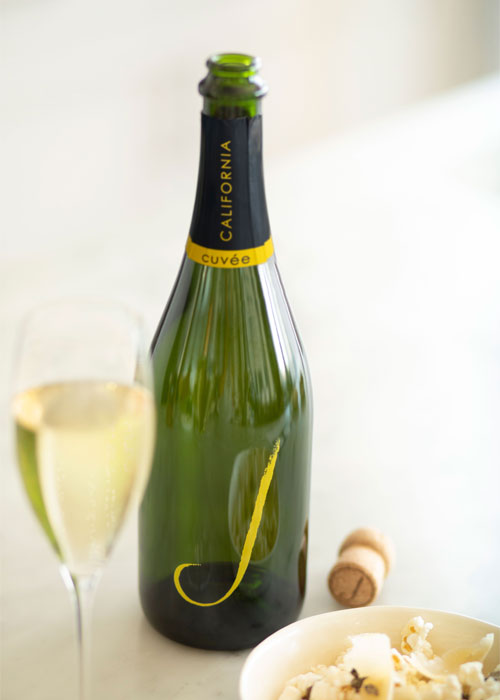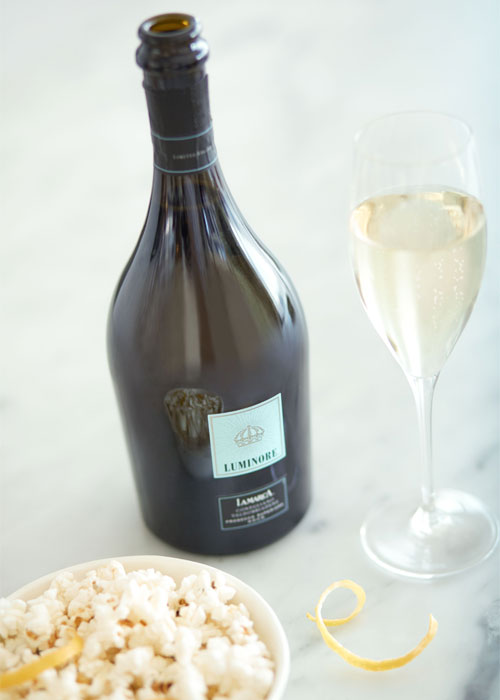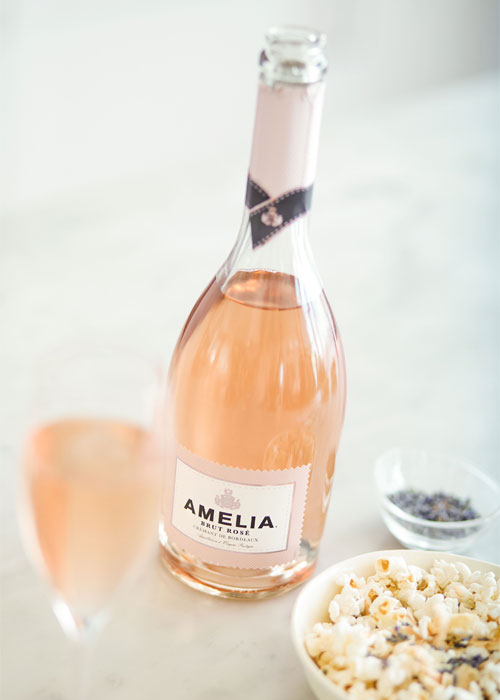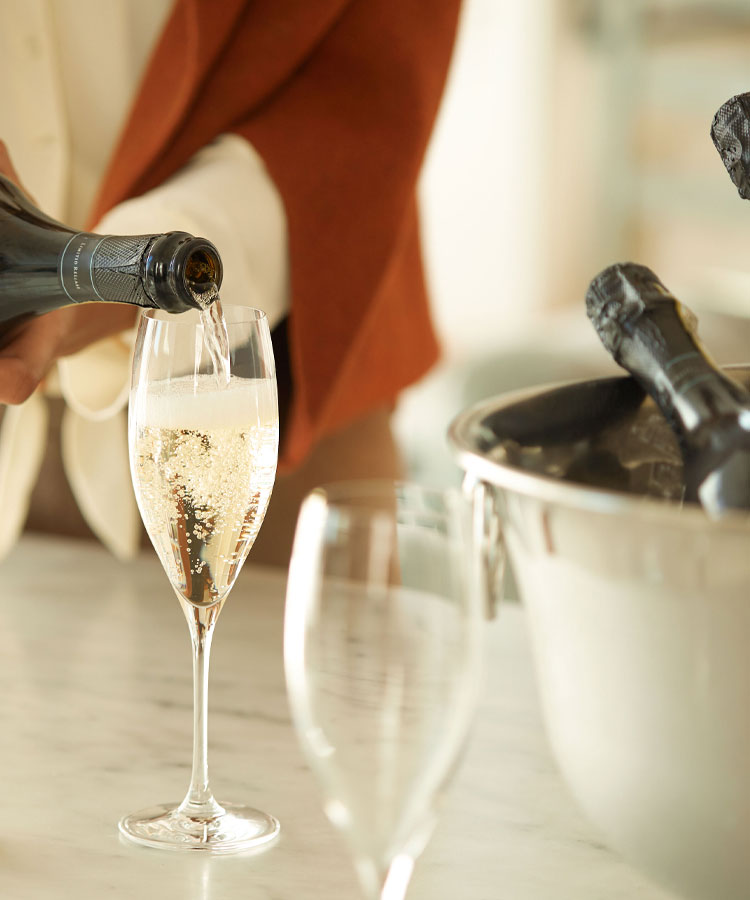
If you pop a bottle of bubbly for celebrations, you’re not alone. Many people think to reach for sparkling wine to kick off festivities, including birthdays, anniversaries, and other milestones. But we’re here to tell you that you don’t need an occasion to break out the bubbles; they’re just as great for more mundane events, like a Wednesday evening on your couch.
Watching “La Dolce Vita” on Netflix? Uncork the Prosecco Superiore. Pairing a charcuterie board with game night? Open a California sparkler. Having the ladies over for book club? There’s a crémant rosé for that.
There’s a world of sparkling wine out there — and it doesn’t have to break the bank. Some of the best Proseccos, California sparkling wines, and French crémants are available for a fraction of the cost of Champagne and can make a casual weeknight dinner or lazy Saturday afternoon that much more enjoyable. Everything’s happier with a bottle of bubbles.
To start you on your journey of everyday sparkling, here are seven things you didn’t know about the wines:
1. There’s more than one way to bubble.
Sparkling Wine and soda both have bubbles, but that’s about the limit of their similarities. Soda is just sugary liquid injected with carbon dioxide — an industrial SodaStream, if you will. But when it comes to sparkling wine, things get a little more complex. The two most common ways to make sparkling wine fizzy are via the Champagne method (also called the traditional method or méthode traditionnelle) and the Charmat method. Champagne and sparkling wines, like those made at J Vineyards & Winery in Sonoma County, Calif., are produced in the Champagne style, where the carbonation comes from a second fermentation that takes place under cork in the bottle and takes years to achieve the desired result. Prosecco from Italy, like Luminore by La Marca Prosecco, employs the Charmat method, a much more efficient way of making bubbly by which the second fermentation is carried out in stainless steel tanks under pressure before the wine is bottled.
2. Serious sparkling wines are made all around the world.
Champagne may have the brand name, but that region isn’t the only producer of quality sparkling wine. In fact, plenty of palates prefer bubbles from other regions, including California, Italy’s Veneto, and Bordeaux, because they offer a variety of styles and flavors.
“California sparkling producers have the freedom to offer a greater diversity in wine styles,” says Nicole Hitchcock, winemaker at J Vineyards & Winery, who ages her wines for a minimum of two years and up to seven years on the lees. “Our sparkling wines have the advantage of being grown in a mild climate infused with that famous California sunshine. We’ve had the luxury of building upon the foundations built over centuries of learning in Europe, and then innovating beyond traditional approaches,” she adds.

3. Champagne isn’t France’s only sparkler.
France actually has an entirely other category of high-quality sparkling wines, called crémant, that tend to come at much more approachable prices. Made using the same Champagne method, there are fewer rules concerning grape varieties, aging requirements, etc. when it comes to crémant, which means that winemakers can be a little more creative. Named for the regions they’re made in (such as Crémant d’Alsace, Crémant de Bourgogne, Crémant de Jura) the wines put to use regional grape varieties. So at Amelia in Bordeaux, that means Merlot and Cabernet Franc serve as the base for its Brut Rosé Crémant de Bordeaux. The result is a fruit-forward, robust pink bubbly.
4. There’s a hierarchy to Prosecco.
Not all Proseccos are created equal. A wine can only be labeled Prosecco Superiore D.O.C.G. (Denomination of Controlled and Guaranteed Origin) if it’s made entirely from the Glera grape within the Conegliano di Valdobbiadene area of Italy’s Veneto region and all of the grapes are hand-picked from selected plots on the steepest slopes. This is what sets Luminore by La Marca Prosecco Superiore D.O.C.G. apart from most other Proseccos on the shelf; it has the highest quality designation a Prosecco can achieve. Additionally, the wine is aged on the lees before the second fermentation, resulting in a delicate and crisp Prosecco with plenty of complexity in aroma and flavor.

5. No flute necessary.
Celebratory flutes look beautiful, but let’s be honest: It can be a little tough to get your schnoz in the glass! If you ask any serious winemaker (or wine consumer), they will tell you that sparkling wines are best served in other types of glassware. Luminore by La Marca Prosecco really shines in a tulip-shaped glass. The rounded bulb releases more of the floral aromas and the flared lip makes it easier for you to take them all in.
Similarly, red wine glasses bring out the complexities of J Vineyards & Winery California Cuveé. Often, a larger red wine glass can help bring out more bright aromas and flavors from the wine, which can enhance your food pairing.
6. Brut means dry, even if it’s pink.
One of the biggest misconceptions about rosé, especially sparkling rosé, is that it’s always sweet. Actually, there are different levels of sweetness for bubbles, noted on the label with terms like brut, extra dry, and demi-sec, but the color of the wine has nothing to do with its sweetness. If a wine says “brut” on its label, you can be sure that it’s dry, with somewhere between 3 and 12 grams of residual sugar per liter — a sweetness that’s not perceptible to most human palates. Amelia Brut Rosé clocks in at just 5.6 grams per liter — it’s well balanced with crisp acidity and rich, deep plum and berry notes. There’s even a hint of toasted brioche. Extra dry and dry styles land somewhere in the middle of the scale, with a bit more sweetness on the finish, while demi-sec and doux bubbles will definitely feel like a dessert — lots of residual sugar for a super-sweet ending.

7. You can serve sparkling wine with everything from sushi to dessert.
Bubbles can be more than an aperitif. While we all love to sip something sparkling to warm up our palates, be sure to refill your glass for the rest of the meal. Sparkling wine can take you from the amuse-bouche through dessert. The trick is to focus on the weight of the wine. Lighter, floral-driven styles work best for the beginning of the meal — passed hors d’oeuvres and appetizers like crudo — while richer, creamier sparklers are hearty enough to pair with heavier dishes and red meats. Medium-bodied styles, such as Amelia’s Brut Crémant Rosé, can stand up to such flavorful dishes as a spicy tuna roll without getting lost in the mix of fatty fish and mayonnaise, and the fruit-forward wine will even out the heat of the sriracha. Other medium-bodied bubbles, like Luminore by La Marca Prosecco, can be served alongside entrées, too, especially grilled chicken or pork. Here, the acidity of the wine helps cleanse the palate.
A little further down the spectrum, J Vineyards & Winery’s sparkling wines can even pair with a steak and French fries. The more robust style comes from the traditional method of fermentation and additional time the wine spends on the lees, which gives the wine enough oomph to stand up to rich dishes (like a nicely cooked piece of beef). When it comes to the sweet ending, look for aromatic brut styles of wine to add a welcome not-sweet component to dessert. The dryness, fine bubbles, and crisp acidity balance out the sugar and creaminess of treats like panna cotta and vanilla ice cream.
Click the link here to find out where to purchase any (or all) of the three bubbly wines!
This article is sponsored by Amelia Brut Rosé, Luminore by LaMarca, and J Vineyards & Winery.
